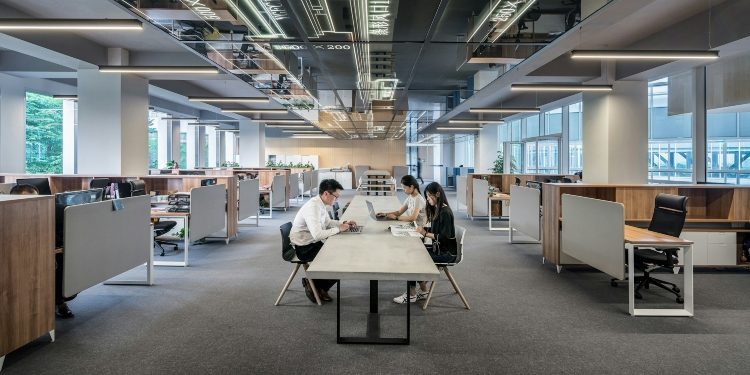It feels great when your business grows, and you plan to relocate to a bigger office. But with relocation comes many challenges, which makes the transition quite challenging. You need strategic planning and direction to make the move successful.
In this blog, we explore seven strategies to help you navigate the challenges of moving offices. This includes having a dedicated team of employees and trusted office removalists to direct the move correctly.
1. Plan and Timeline
Without a proper plan and a well-structured timeline, the relocation process can become a mess and lead to unnecessary stress. Create a timeline for your office move before even starting on anything. It doesn’t require including small details but just the broader aspects of when a specific task needs to be completed. This includes when you will finalise the new office space, complete renovations, set up the IT department and book the movers.
It provides a realistic view of the move and helps to manage time and resources more effectively. You can also discuss the timeline with your team members for their insights. Add buffer time for things that might slow down the process, such as technical obstructions. Most small office moves take place after six months of careful planning, while the large ones take 1 to 2 years. Consider using used office furniture, which can be a cost-effective and beneficial option.
2. Team Development
Relocation is a lot of work, and without a dedicated team, there will be a lack of coordination, communication breakdowns and risk of errors. To avoid this, you can involve your employees in the relocation process, develop a team and delegate responsibilities to them. This makes them feel valued and motivated. It also creates a sense of ownership and accountability in them.
You can involve members from the administration, HR and IT teams. Appoint one of them as the point of contact to make the follow-ups easy and ensure that things progress positively. They will keep in touch with the office removal company. The rest of the team members will assist them in accomplishing the tasks and see that everything is remembered.
3. Employee Concerns
Moving to a new location can be a challenge and a source of anxiety for some employees. They may need help joining the new office, especially in a new city. Their concerns can be related to their families or transportation. Talk to each of them, allow them to express their concerns, and see if you could help.
You can explain the reason behind this move and all the facilities they will get at the new place. You can offer transportation facilities or increase their salaries to compensate for travel expenses. Tell them about the local amenities and community services near the new office.
4. New Office Layout Design
Take time to plan the layout of your new office, as a poor layout often results in low satisfaction and morale among employees, leading to low productivity. Check in advance if the new office needs any improvements relating to the seating arrangement of your employees. Decide on the location of the conference room, documents, furniture, wifi, telephone, electrical connections and other necessary equipment.
Making a layout design in advance helps to avoid the unnecessary hassle that employees go through just after relocation because they can’t locate the place of things. Also, it helps the movers who provide the office furniture removals services to set up the employees’ desks and other furniture according to the layout plan. This sets things in order and prevents operational hindrances.
5. IT Relocation Plan
IT relocation is the most complex part of office relocation, and failing to plan can result in data loss, disruptions, employee frustration, and revenue losses. Make sure you plan it. Conduct an audit of your IT setup, paying attention to the server room, networking equipment, workstations and any other technical aspects.
Involve your IT department in the process. Get their insights on moving the hardware, transferring data and reinstalling the systems at the new place. Ensure the fragile items are taken care of during the move. Contact your internet service providers to avail the service at the new location.
6. Checklist
It may not seem that important initially, but you’ll miss out a lot if you fail to maintain a checklist. It helps to keep track of each step of the relocation process from beginning to end, such as communication, packing, unpacking, setup, etc.
In the checklist, include things like:
-
- the timelines of tasks
- list of required furniture, equipment and appliances
- inventory of tools and supplies for every use, such as stationary, coffee mugs, napkins, trash cans, cleaning solutions, etc.
- names and contacts of persons with assigned responsibilities
7. Commercial Mover Company
Hire a company that provides commercial mover service to make your move seamless. But before handing them your relocation responsibility, get their office relocation costs, and check their review and ratings online to get an insight into their quality of service.
Ask your network of connections for recommendations on good mover companies. Also, confirm if they provide insured services to cover any unfortunate events. It ensures the safe movement of all your office equipment.
Conclusion
Every office relocation has challenges, but if you include the strategies mentioned above, the move might be much more straightforward. If you still need help, contact an office moving company like Arnold & Self for better guidance.
They are experts in office relocation and have been in this service for many years. Their team of dedicated specialists will help you with each step, from packing to unloading and setup. They even offer storage facilities for things you won’t need immediately at your new office.
David Prior
David Prior is the editor of Today News, responsible for the overall editorial strategy. He is an NCTJ-qualified journalist with over 20 years’ experience, and is also editor of the award-winning hyperlocal news title Altrincham Today. His LinkedIn profile is here.












































































